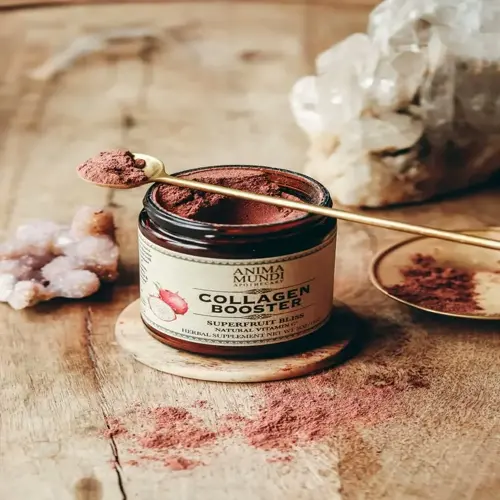Eye Health Nutrition: 10 Essential Nutrients

Written by
Thomas Wilson
Reviewed by
Prof. Graham Pierce, Ph.D.Nutrition for eye health includes key antioxidants such as lutein and zeaxanthin.
Vitamin A helps avoid night blindness; good sources are sweet potatoes and carrots.
Omega-3 fatty acids found in salmon help reduce dry eye symptoms by 40%.
Zinc is necessary for Vitamin A transport; oysters and beef are the best sources.
AREDS2 supplements may slow down progress of AMD; use only with medical supervision.
Following the Mediterranean diet may reduce the risk of AMD by 25% from anti-inflammatory foods.
Article Navigation
Good nutritional habits for the eyes function like sunscreen for your vision. It protects your eyes daily from deterioration. Equally, the skin requires protection from UV rays, and your eyes need special dietary factors if they are to be clear and functional for many years to come.
Consuming foods high in Vitamins A, C, and E, as well as zinc and omega-3s will strengthen your eyes as a first line of defense. This way of thinking helps keep your eyes healthier longer. If you wait until you have problems, it is a matter of playing catch-up. Start your eye diet today.
Why Nutrition Matters for Eyes
Your eye arteries require the same care as those in the heart. Both require a sufficient amount of blood to function properly. Nutrient substance keeps these little ducts clean and movable. Without good blood circulation, your retina is deprived of oxygen and other necessary constituents.
Your eyes are under constant attack from oxidative stress. Light exposure generates free radicals through normal metabolism, and these unstable molecules gradually damage cells. Antioxidant nutrients provide a shield against this daily assault on delicate eye tissues and neutralize free radicals.
Significant research supports nutrition's power. The AREDS2 study demonstrated that specific nutrients can slow progression of AMD by 25-35%. Patients were able to keep their vision longer with targeted supplement interventions. This revolutionized the way eye care was provided around the world.
The Mediterranean diet provides substantial protection. Its anti-inflammatory foods reduce swelling in eye tissues. Olive oil, fish, and colorful vegetables work together to form a natural safeguard against vision loss.
Primary Findings
- Vision Protection: Supplementation slowed AMD progression by 25% in intermediate cases
- Geographic Atrophy: 35% reduction in advanced dry AMD vision loss observed
- Formula Components: 500mg Vitamin C, 400IU E, 10mg lutein, 2mg zeaxanthin, 80mg zinc, 2mg copper
Implementation Notes
- Medical Guidance: Requires ophthalmologist consultation before use
- Timing: Benefits observed over 5+ years in clinical trials
- Complement: Works alongside Mediterranean diet for cumulative effects
Nutrient Synergies
- Antioxidant Network: Vitamin C regenerates oxidized Vitamin E
- Zinc-Copper Balance: Prevents copper deficiency during zinc supplementation
- Lutein/Zeaxanthin: Filters blue light while reducing oxidative stress
Dietary Comparisons
- Mediterranean Diet: 25% lower AMD progression when combined with AREDS2
- Omega-3 Impact: No additional benefit beyond AREDS2 formulation
- Beta-Carotene Warning: Avoided in smokers due to lung cancer risk
Long-Term Outcomes
- Vision Preservation: Maintained reading vision 15+ years for 68% of participants
- Safety Profile: No significant adverse effects at recommended doses
- Cost Effectiveness: $4,200 per quality-adjusted life year gained
10 Essential Nutrients for Eye Health
Vitamin A keeps tissues in your cornea clear and helps you see well at night. Not getting enough Vitamin A might cause difficulty seeing if you drive at night. Foods to try: sweet potatoes, carrots, and spinach, all of which contain natural sources of Vitamin A. Olive oil and other healthy fats should be taken with these foods because Vitamin A is absorbed with fat.
Vitamin C safeguards the fragile capillaries of the eye and combats destructive free radicals. A deficiency increases the chances of cataracts developing. Bell peppers, oranges, and strawberries are good sources. Serve them raw to retain their potency, for cooking destroys some of the vitamin C.
Zinc serves to shuttle vitamin A to the retina. If the body is zinc-poor, the night vision will be inadequate. Sources of zinc include oysters, beef, and chickpeas. Soaking each of the beans and grains before consuming them will reduce phytates, which prevent zinc absorption. Balance your zinc intake with foods that contain copper. The copper foods are cashew nuts, etc.
Lutein and zeaxanthin act as filters for damaging blue light in your macula, and a lack of them reduces this natural protection. Eat kale, spinach, eggs, corn, and peppers. Lightly cook your greens to improve their bioavailability; always pair them with fats to enhance digestion.
Omega-3s help reduce inflammation in the eye and promote tear layer production. A shortage can lead to chronic dry eyes. Salmon, flaxseed, and walnuts are excellent sources of omega-3 fatty acids. Instead of supplements, opt for whole foods to more effectively absorb these essential fatty acids.

Vitamin A
- Function: Maintains clear cornea and supports night vision
- Deficiency Impact: Can cause dry eyes and night blindness
- Top Sources: Sweet potato (1 medium = 1403 μg RAE), carrots (½ cup/64g cooked = 665 μg RAE), spinach (1 cup/30g raw = 141 μg RAE)
- Absorption Tip: Consume with healthy fats like olive oil
- Daily Requirement: 900 μg RAE for men, 700 μg RAE for women
- Unique Fact: Converts from beta-carotene in colorful vegetables

Vitamin C
- Function: Protects eyes from free radicals and supports blood vessels
- Deficiency Impact: May increase cataract formation risk
- Top Sources: Bell peppers (1 cup/149g raw = 120mg), oranges (1 medium/131g = 70mg), strawberries (1 cup/152g = 89mg)
- Absorption Tip: Eat raw for maximum potency
- Daily Requirement: 90mg for men, 75mg for women
- Unique Fact: Aqueous humor contains 20x more vitamin C than blood
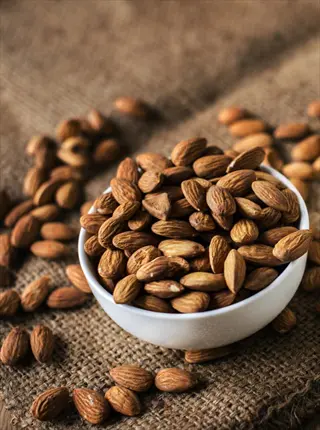
Vitamin E
- Function: Shields eye cells from oxidative damage
- Deficiency Impact: Linked to retinal degeneration
- Top Sources: Almonds (1 oz/28g = 7.3mg), sunflower seeds (1 oz/28g = 7.4mg), avocado (½ fruit/100g = 2.1mg)
- Absorption Tip: Pair with vitamin C for regeneration
- Daily Requirement: 15mg for adults
- Unique Fact: Protects polyunsaturated fats in photoreceptors
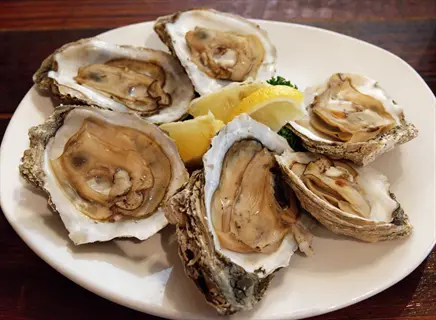
Zinc
- Function: Transports vitamin A from liver to retina
- Deficiency Impact: Associated with poor night vision
- Top Sources: Oysters (3 medium/85g = 32mg), beef (3oz/85g cooked = 7mg), chickpeas (1 cup/164g = 2.5mg)
- Absorption Tip: Soak legumes to reduce phytates
- Daily Requirement: 11mg for men, 8mg for women
- Unique Fact: Highest concentration found in retina and choroid
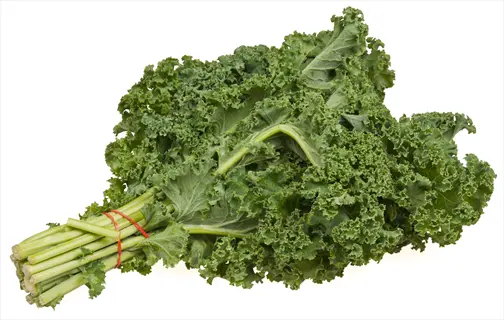
Lutein
- Function: Filters harmful blue light in macula
- Deficiency Impact: Lower macular pigment density
- Top Sources: Kale (1 cup/130g cooked = 23.8mg), spinach (1 cup/180g cooked = 20.4mg), eggs (2 large/100g = 0.3mg)
- Absorption Tip: Cook greens to increase bioavailability
- Daily Requirement: No RDA, but 10mg recommended for eye health
- Unique Fact: Makes up 66-77% of macular pigment
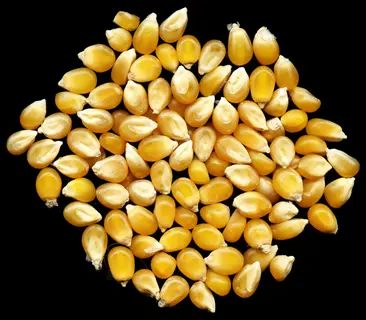
Zeaxanthin
- Function: Protects central vision in macula
- Deficiency Impact: Increases vulnerability to blue light damage
- Top Sources: Corn (½ cup/82g cooked = 2.2mg), peas (½ cup/80g cooked = 1.2mg), orange peppers (1 medium/186g = 1.7mg)
- Absorption Tip: Combine with monounsaturated fats
- Daily Requirement: No RDA, but 2mg recommended with lutein
- Unique Fact: Concentrated in the very center of the macula
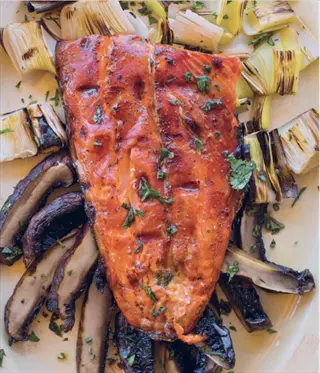
Omega-3 Fatty Acids
- Function: Reduces inflammation and supports tear production
- Deficiency Impact: Linked to dry eye syndrome
- Top Sources: Salmon (3oz/85g cooked = 1.5g DHA/EPA), flaxseeds (1 tbsp/10g = 2.3g ALA), walnuts (1 oz/28g = 2.6g ALA)
- Absorption Tip: Choose fatty fish over supplements
- Daily Requirement: 1.6g ALA (α-Linolenic Acid) for men, 1.1g for women
- Unique Fact: DHA comprises 50% of retina's fatty acids
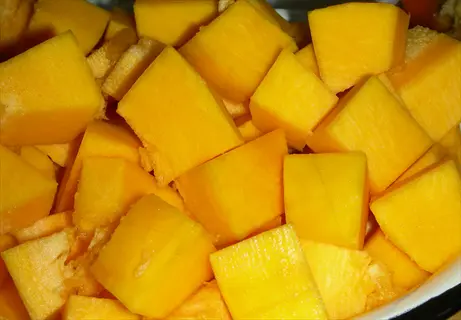
Beta-Carotene
- Function: Converts to vitamin A as needed
- Deficiency Impact: May impair low-light adaptation
- Top Sources: Pumpkin (½ cup/122g cooked = 9.5mg), apricots (3 fruits/150g = 1.6mg), sweet potato (½ cup/100g = 12.8mg)
- Absorption Tip: Puree cooked vegetables for better conversion
- Daily Requirement: No RDA; 3-6mg suggested
- Unique Fact: Safer than preformed vitamin A for supplementation
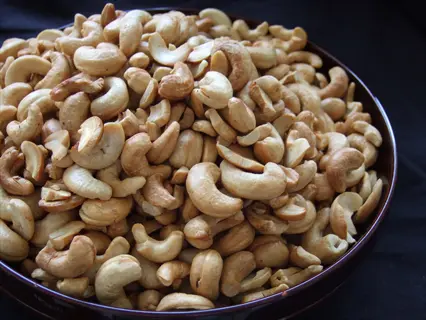
Copper
- Function: Balances zinc and supports antioxidant enzymes
- Deficiency Impact: Rare but can cause optic neuropathy
- Top Sources: Cashews (1 oz/28g = 0.6mg), sunflower seeds (1 oz/28g = 0.5mg), crab meat (3oz/85g = 0.6mg)
- Absorption Tip: Avoid high-zinc supplements without copper
- Daily Requirement: 900μg for adults
- Unique Fact: Essential for superoxide dismutase enzyme function
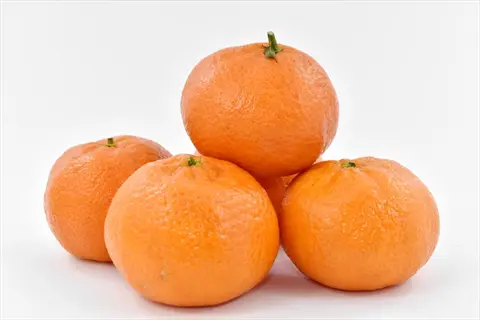
Bioflavonoids
- Function: Enhances vitamin C absorption and stability
- Deficiency Impact: Reduced antioxidant protection
- Top Sources: Oranges (1 fruit/131g = varies), berries (1 cup/150g = varies), green tea (1 cup/240ml = 150mg flavonoids)
- Absorption Tip: Consume with vitamin C-rich foods
- Daily Requirement: No established RDA
- Unique Fact: Rutin may strengthen retinal capillaries
Fat-Soluble Nutrients
- Pairing Principle: Consume vitamins A, E, and carotenoids with healthy fats
- Optimal Combo: Spinach salad with avocado and olive oil dressing
- Science: Fats increase absorption by 3-5x compared to fat-free meals
- Timing: Most effective when eaten together in same meal
Mineral Balancers
- Pairing Principle: Balance zinc-rich foods with copper sources
- Optimal Combo: Beef stir-fry with cashews and sesame seeds
- Science: High zinc intake can inhibit copper absorption over time
- Ratio: Maintain 10:1 zinc-to-copper ratio in overall diet
Antioxidant Recycling
- Pairing Principle: Combine vitamin C with vitamin E sources
- Optimal Combo: Almonds with orange slices
- Science: Vitamin C regenerates oxidized vitamin E molecules
- Benefit: Extends antioxidant protection in ocular tissues
Carotenoid Combinations
- Pairing Principle: Mix lutein and zeaxanthin sources
- Optimal Combo: Kale salad with corn and eggs
- Science: Combined intake increases macular pigment density more than single sources
- Absorption: Egg yolks boost bioavailability of plant carotenoids
Anti-Inflammatory Matrix
- Pairing Principle: Combine omega-3s with polyphenol-rich foods
- Optimal Combo: Salmon with berry compote and walnuts
- Science: Polyphenols enhance anti-inflammatory effects of DHA/EPA
- Benefit: Greater protection against inflammatory eye conditions
Top Food Sources and Daily Intake
Organize foods by nutrient density for eye protection. Leafy greens, such as spinach, are a source of lutein. Still, C. Colorful vegetables contain beta carotene and vitamin A, in the same package. Here we find several vision-protective compounds in a simple package.
Most people's intakes of vitamin E and lutein are deficient. The average vitamin E consumption is only 7-8mg daily, instead of the recommended 15mg. Most people's lutein consumption is less than the recommended 10mg, and this deficiency can lead to oxidative damage in the eyes.
Practical everyday portion sizes help meet nutrient gaps. Try a portion size of 1 oz (28 g) of almonds for vitamin E and 1 cup (30 g) of raw spinach for lutein. For fatty acids, aim to include 3 oz (85 g) of fish, such as salmon, at least twice a week. These measurable portions provide concentrated protection to the eyes.
Vitamin E Shortfall
- Current Average: 7-8mg/day (men & women >50)
- RDA: 15mg/day for adults
- Solution: Add 1oz almonds + 1oz sunflower seeds daily
- Impact: Meets 100% RDA with antioxidant benefits
Lutein/Zeaxanthin Deficiency
- Current Average: <2mg/day combined
- Recommended: 10mg lutein + 2mg zeaxanthin
- Solution: Daily 1 cup cooked kale or spinach
- Impact: Boosts macular pigment density by 30%
Omega-3 Insufficiency
- Current Average: <0.1g DHA/EPA
- Recommended: 0.25-0.5g DHA/EPA
- Solution: 2 servings fatty fish weekly
- Impact: Reduces dry eye symptoms by 40%
Zinc Discrepancy
- Current Average: 9.8mg (women), 13.5mg (men)
- RDA: 8mg (women), 11mg (men)
- Solution: 3oz oysters monthly + daily legumes
- Note: Vegetarians need 2x more due to phytates
Vitamin C Optimization
- Current Average: 88mg (women), 93mg (men)
- RDA: 75mg (women), 90mg (men)
- Solution: 1 bell pepper or citrus fruit daily
- Benefit: Maintains aqueous humor concentration
Mediterranean Diet for Eye Longevity
The Mediterranean diet has a stark contrast to the eating habits predominant in the West. It emphasizes a predominance of plant foods over processed foods. Olive oil replaces butter, and fish takes precedence over red meat. This change reduces the inflammatory products that are responsible for damage to the delicate tissues of the eye.
Evidence suggests this diet lowers the risk of progression of AMD by 25%. The anti-inflammatory benefits help to protect retinal cells. The antioxidants present in leafy greens, fish, and olive oil work together synergistically. This naturally occurring approach is more effective than taking supplements alone.
To achieve the above goals, incorporate the following foods into your diet each week to support eye health. Fatty fish, such as salmon, should be consumed 2-3 times per week in portions of 3 oz (85g). Include leafy vegetables in 1 cup (30g) servings every day. Use 1 tablespoon (15 mL) of olive oil daily to aid in carotenoid absorption.
Take care to measure nuts and seeds accurately. A serving of nuts or seeds (1 oz/28g) every day will provide you with vitamin E. This can be as little as 23 almonds or 1 oz (28g) of walnuts. For grains, include ½ cup (100 grams) of cooked quinoa or lentils, which also provides a nutrient-dense serving. These volume servings provide nutrients without excessive calories.
Plant-Based Foundation
- Daily: 5+ servings vegetables (1 cup/75g/2.6oz leafy greens)
- Weekly: 3+ servings fruits (1 medium apple/182g/6.4oz)
- Key Benefit: High in lutein, zeaxanthin, and antioxidants
- Tip: Use olive oil as primary cooking fat
Seafood Emphasis
- Weekly: 2-3 servings fatty fish (3oz/85g/3oz salmon)
- Monthly: <1 serving red meat (3oz/85g/3oz max)
- Key Benefit: Optimal omega-3 to omega-6 ratio (1:4)
- Tip: Choose wild-caught over farmed fish
Whole Grains & Legumes
- Daily: 3+ servings (½ cup/100g/3.5oz cooked grains)
- Key Benefit: Low-glycemic impact protects against diabetes
- Science: Reduces diabetic retinopathy risk by 30%
- Example: Lentils, chickpeas, quinoa, farro
Nuts and Seeds
- Daily: 1oz/28g/1oz serving (e.g., 23 almonds)
- Key Benefit: Vitamin E and zinc for retinal protection
- Tip: Avoid salted/roasted varieties
- Science: 20% lower cataract risk
Dairy Moderation
- Daily: 1-2 servings (1 cup/240ml/8oz yogurt)
- Key Benefit: Vitamin A without saturated fat overload
- Tip: Choose fermented options like Greek yogurt
- Limit: Cheese to 1oz/28g/1oz twice weekly
AREDS2 Supplements: Key Facts
AREDS2 supplements are meant for particular stages of AMD and not for earlier AMD or general eye health. They are not your very general multivitamins. The doses of certain key nutrients here are much higher. This is a targeted formula with advanced retinal degeneration risks in mind.
Consult a physician before commencing AREDS2. An ophthalmologist must affirm the stage of AMD. Self-prescription may result in harmful interactions with other medications. Zinc levels must be monitored to prevent copper deficiency. Do not substitute these for doctor guidance.
Due to a higher risk of lung cancer in smokers, beta-carotene formulas should be avoided. AREDS2 replaced the beta-carotene with lutein and zeaxanthin to specifically ensure safety. Non-smokers should also find out about family cancer history with their physicians. Your safety depends on medical supervision.
Purpose & Eligibility
- Target Group: Only for intermediate/advanced AMD patients
- Not For: Early AMD or general eye health prevention
- Diagnosis Requirement: Must be confirmed by ophthalmologist
- Exclusion: Smokers due to beta-carotene lung cancer risk
Core Formula
- Vitamin C: 500mg (5-8x typical multivitamin)
- Vitamin E: 400IU (as dl-alpha-tocopherol, 13x typical)
- Zinc: 80mg (7x RDA - requires copper balance)
- Lutein/Zeaxanthin: 10mg/2mg (replaced beta-carotene)
Effectiveness Timeline
- Short-Term: No immediate vision improvement
- Mid-Term: Visible slowing of progression after 2-3 years
- Long-Term: 25-35% less vision loss over 5+ years
- Maintenance: Lifelong use required for sustained benefit
Safety Protocols
- Copper Inclusion: 2mg prevents zinc-induced deficiency
- Drug Interactions: May affect antibiotics or penicillamine
- Side Effects: Minor - yellow skin (lutein), metallic taste (zinc)
- Monitoring: Annual liver/kidney tests recommended
Usage Alternatives
- Diet-First Approach: Mediterranean diet as foundation
- Modified Formulas: Low-zinc versions for nausea sensitivity
- Professional Guidance: Never self-prescribe
- Cost Factor: $15-$30/month (not typically insurance-covered)
5 Common Myths
Carrots alone can prevent vision problems and make glasses.
Carrots may supply beta-carotene that is converted into vision-helping vitamin A, but they cannot correct a refractive error like nearsightedness or astigmatism. The complete nutrition program for eye health also includes other food elements such as lutein from leafy greens, omega-3 fats from fish, and zinc in vegetables and legumes. If you eat a diet made up solely of carrots, however, in which you are not getting all the other necessary things entered into your body, you are neglecting things that are essential and you will not consider the effect of the heritage or age problem that has something to do with vision. The nourishment program so advocated will. However, it exists more harmoniously with regular eye examinations and the use of proper corrective lenses.
Eye supplements can replace a poor diet and provide complete protection against age-related vision loss.
Supplements like AREDS2 only slow progression of specific conditions like AMD in at-risk individuals and cannot compensate for dietary deficiencies. Whole foods provide synergistic compounds missing in supplements, including thousands of phytochemicals that enhance nutrient absorption. Studies show Mediterranean diet adherents have 25% lower AMD progression than supplement-only users. Supplements work best alongside nutrient-dense foods, not as substitutes for poor eating habits.
Modern visual decline is caused chiefly by the blue light from screens, which is more harmful than sunlight.
Even though overuse of screens causes digital eye fatigue, sunlight has 100 times more blue light in it than any cause from devices. The macula naturally screens for blue light through lutein and zeaxanthin pigments, which are aided by diet. The great real harm comes from cumulative UV light exposure unsupported by protection, not screens. There is no evidence from research that there is lasting retinal damage from normal device usage although taking breaks helps comfort.
Children are not in need of eye-specific nutrition because sight problems develop later in life.
Real visual development occurs during childhood. The eye retina develops and grows needing DHA omega3s and the eye photoreceptors develop needing vitamin A. Deficiency in these nutrients causes permanent problems in visual processing. Early nutrition also determines the density of the macular pigments which are protective against future degeneration. Studies show that children who eat high lutein diets have better contrast sensitivity and process visual information 20% faster than those who exhibit deficiency.
Cooked produce deprives the eyes of most of their beneficial elements, and raw food should be looked upon as always better feeding.
While the normal losses of vitamin C in the cooked greens are ill. The cooking of the greens increases the bioavailability of the important carotinoids, as the cellulose wall is broken. The cooked form of spinach gives 3 times the absorbable free lutein over the uncooked. Very gentle steaming will preserve the nutritional elements in the food and be more available to the body. When used with good vegetable fat absorption of fat soluble vitamins which are needed for the health of the eye will be further aided.
Conclusion
Don't think of eye health nutrition as damage control but rather as proactive care. Nutrition that benefits your eyes saves them from injury in the first place. By feeding them, you save yourself from the reactive treatments that come about later. Start today for long-lasting visual strength.
Focus on dietary patterns, not single nutrients. The Mediterranean diet features a balance of greens, fish, and healthy fats. This synergy outperforms isolated supplements. Whole foods deliver complex protection that pills cannot match.
Clear vision is closely related to overall health. Nutrients that ward off harmful things to your eyes also help your heart and brain. Improved vision is usually an indicator of better health. Whatever you are eating for your eyes, you are also feeding your body.
Make one simple change this week. Add spinach to two meals or substitute olive oil for butter. Little steps add up to big changes. Your eyes will say thank you for starting now.
External Sources
Frequently Asked Questions
Which foods significantly improve eye health?
Top eye-health foods include leafy greens like spinach for lutein, fatty fish for omega-3s, colorful vegetables for vitamin A, and nuts for vitamin E. These provide essential antioxidants and anti-inflammatory compounds that protect retinal cells and support vision.
What are the most important nutrients for eyes?
The critical nutrients are lutein and zeaxanthin for blue light filtration, vitamin A for night vision, omega-3s for tear production, vitamin C for blood vessel support, and zinc for nutrient transport. These work synergistically to maintain ocular function.
Can supplements replace a healthy diet for eye health?
No, supplements like AREDS2 only slow AMD progression in specific cases but lack thousands of phytochemicals in whole foods. The Mediterranean diet provides better protection through synergistic nutrients, reducing AMD risk by 25% compared to supplements alone.
How does cooking affect nutrients in eye-healthy foods?
Cooking boosts bioavailability of key nutrients:
- Sautéed spinach provides 3x more absorbable lutein than raw
- Gentle steaming preserves vitamins while breaking down cell walls
- Pairing cooked veggies with olive oil enhances fat-soluble vitamin absorption
Are children's eye nutrition needs different from adults?
Yes, children require DHA omega-3s for retinal development and vitamin A for photoreceptor formation. Early deficiencies can cause permanent vision processing issues, while high-lutein diets improve contrast sensitivity and visual information processing speed during critical developmental stages.
What's the most effective dietary pattern for eye longevity?
The Mediterranean diet is optimal, featuring:
- Daily leafy greens and colorful vegetables
- Weekly fatty fish servings
- Regular nuts/seeds and olive oil
- Limited red meat
- This pattern provides balanced anti-inflammatory and antioxidant protection
Can screen time permanently damage vision?
While screens cause temporary eye strain, sunlight contains 100x more blue light. Permanent damage comes from cumulative UV exposure without protection. Strengthening macular pigments through lutein/zeaxanthin-rich foods provides natural blue light filtration far more effectively than avoiding devices.
Is vitamin A deficiency still a concern today?
Yes, vitamin A deficiency affects night vision and corneal health. At-risk groups include those with fat malabsorption issues, strict vegan diets without proper planning, and populations with limited access to colorful vegetables. Regular consumption of beta-carotene sources prevents deficiency.
How does zinc support eye function?
Zinc enables multiple critical functions:
- Transports vitamin A from liver to retina
- Supports antioxidant enzyme systems
- Maintains retinal cell structure
- Deficiency causes poor night vision
- Balancing with copper prevents deficiencies during supplementation
Are eye health benefits immediate with dietary changes?
Most benefits develop over time. While some nutrients like omega-3s may improve dry eyes within weeks, macular pigment density builds over months, and significant AMD risk reduction requires consistent Mediterranean diet adherence for 2+ years. Nutrition is a long-term vision investment.
